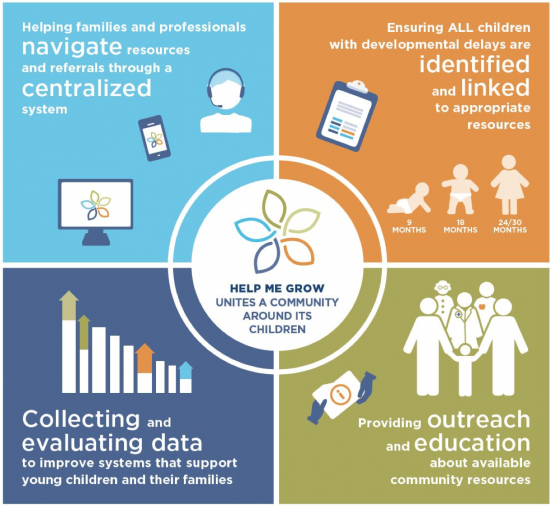Help Me Grow Inland Empire is committed to creating a community-driven early identification and intervention system that aligns and strengthens existing resources. Help Me Grow is made possible by a joint investment from First 5 San Bernardino and First 5 Riverside, in partnership with Loma Linda University Children’s Health.
By developing a regional model across San Bernardino and Riverside Counties, Help Me Grow Inland Empire can:
Better leverage resources, leadership, and data
Create stronger and more effective referral pathways
Ensure that there is no “wrong door” for families seeking support
Help Me Grow Inland Empire is part of Help Me Grow California and the national Help Me Grow movement. Across the country, all Help Me Grow initiatives work to:
Provide outreach and education about available community resources
Ensure all children with developmental delays are identified and linked to resources
Help families and professionals navigate resources and referrals through a central system
Collect and evaluate data to improve the system

Source: Help Me Grow California
The Help Me Grow concept was launched in Connecticut.
Orange County becomes the first site to replicate the system.
Help Me Grow has a national network of 29 affiliates across the country. California becomes an affiliate member of the national Help Me Grow network
In California, 45 of the 58 counties are operating or in the planning process for local Help Me Grow systems.
Help Me Grow Inland Empire becomes the first regional Help Me Grow effort in the state.
Help Me Grow supports a strong early intervention system because catching and treating developmental delays early can have a life-changing impact for children and families.
Developmental screenings before age 3 can identify delays and help connect families to the services they need. The American Academy of Pediatrics recommends that pediatricians conduct developmental screenings at well-child visits at 9, 18, and 24 or 30 months.
Early childhood education programs and family support programs also represent opportunities for screenings. Screenings are part of Quality Start Riverside County and Quality Start San Bernardino County, the quality rating and improvement systems (QRIS).
As many as 25% of children ages 0-5 are at risk for developmental, physical, or social delays.*
Prematurity of less than 32 weeks or low birth weight
Prenatal or other exposure to drugs, alcohol, or tobacco
Poor nutrition or difficulties eating
Environmental factors such as neglect and abuse
Children with an orthopedic, vision, or hearing impairment
Exposure to lead-based paint
© 2020 Help Me Grow Inland Empire